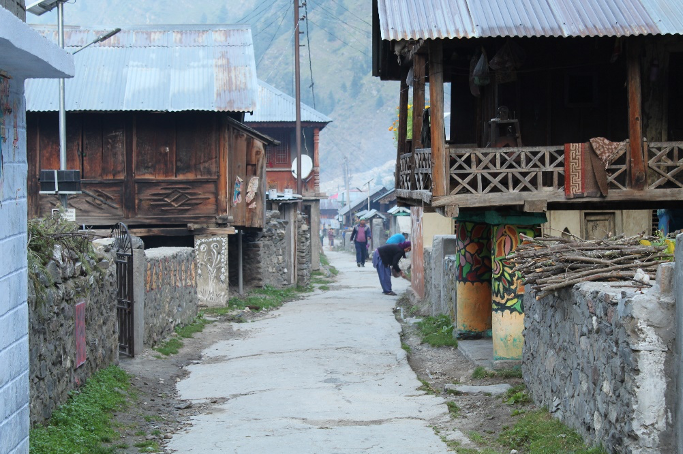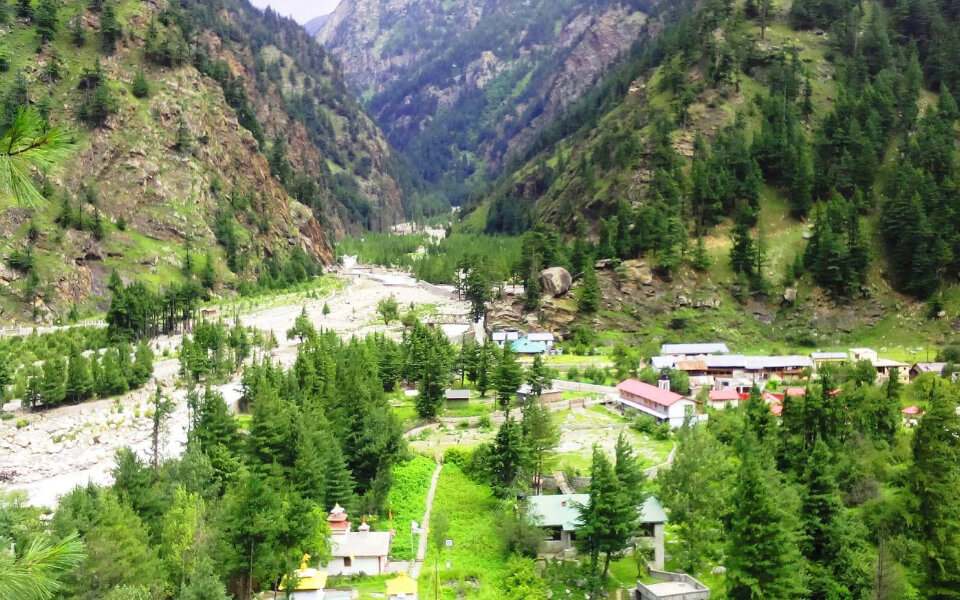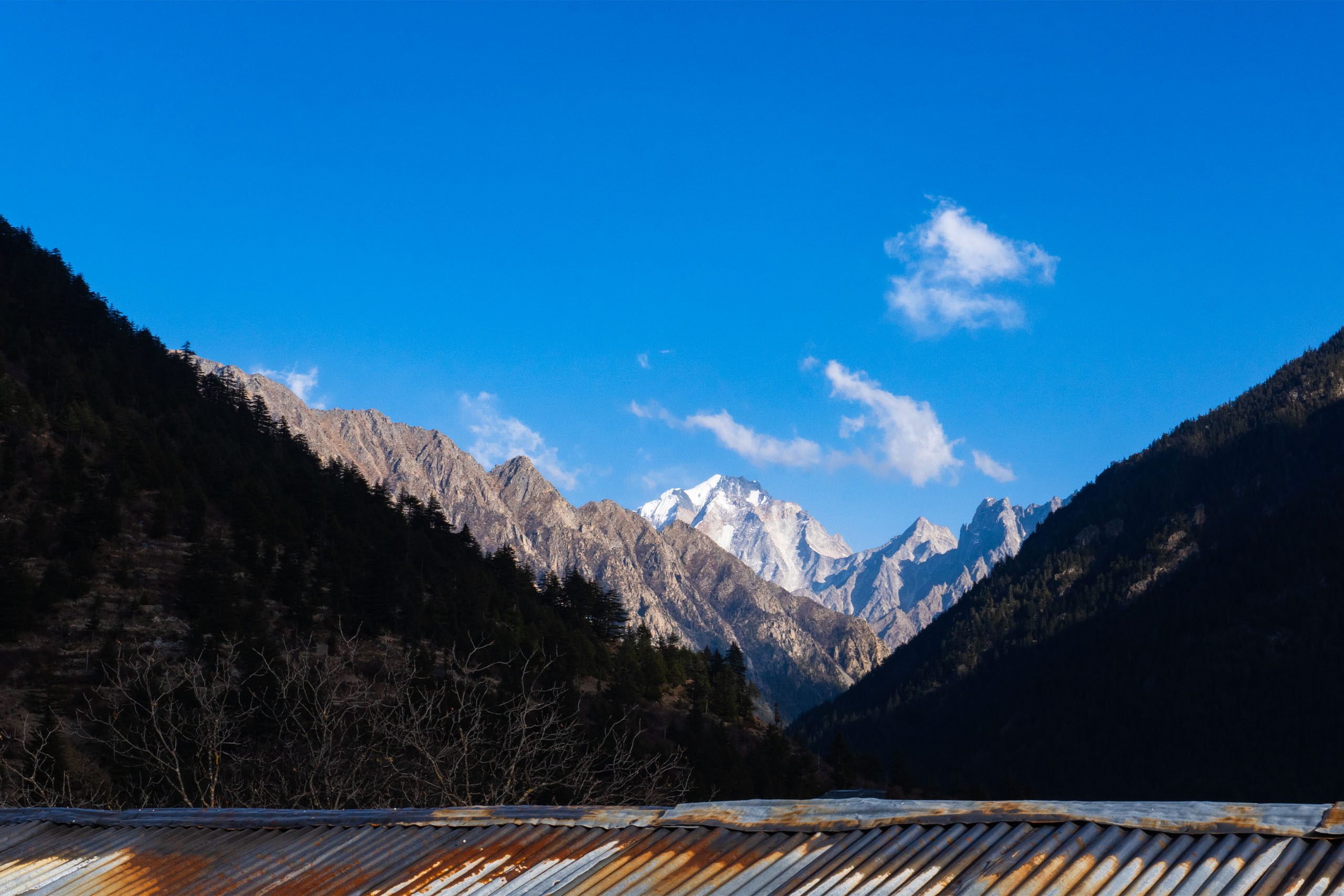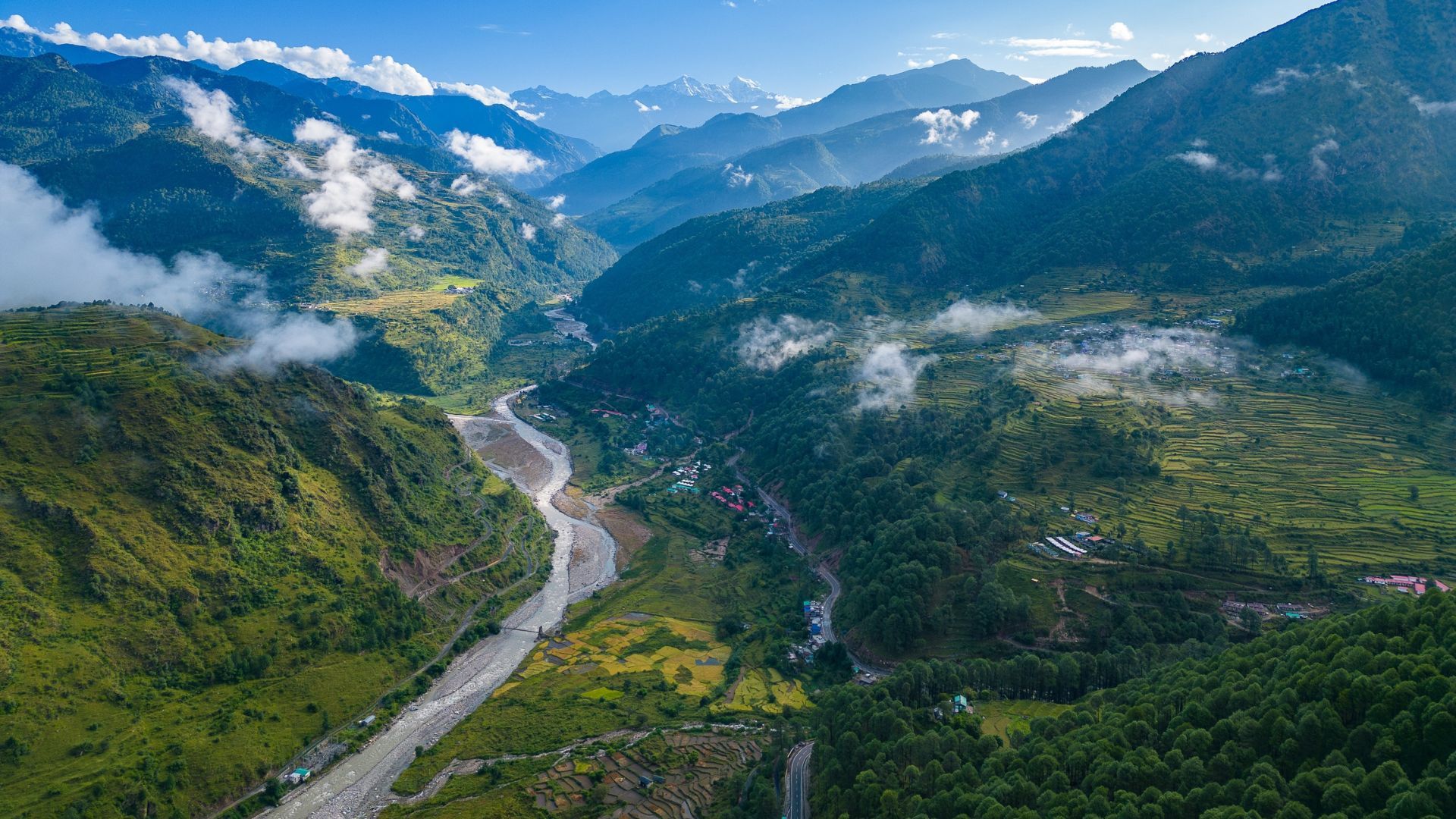Into the Pines: Discover Tranquility with a Harsil Valley Tour Package
Published on June 30, 2025
Harsil valley tour package, Tucked away in the pristine folds of the Garhwal Himalayas, Harsil Valley is a hidden gem that whispers serenity and offers a soulful escape from the chaos of urban life. Often overshadowed by its more popular neighbor, Gangotri, Harsil remains untouched, uncrowded, and unforgettable. Whether you're planning a Harsil Valley tour package from Delhi or seeking an offbeat adventure that combines spirituality and scenic beauty, Harsil is the ideal destination.
Journey Through Tranquility: Your 3-Days Harsil Valley Itinerary
Day 0: Departure from Delhi – Into the Himalayas We Go
-
Assemble at Botanical Garden, Noida by evening.
-
Meet your Trip Captain and fellow travelers.
-
Begin the overnight journey to Harsil in a comfortable AC vehicle.
-
Enjoy halts, food breaks, and stunning views as you leave the city lights behind.
The road trip to Harsil is not just a commute—it’s the beginning of your Himalayan story.
Day 1: En Route to Paradise – Uttarkashi and Arrival at Harsil Valley
-
Early morning arrival in Uttarkashi, the gateway to the Himalayas.
-
Enjoy breakfast amidst mountain views.
-
Continue your drive along the Bhagirathi River to reach Harsil Valley, a peaceful paradise surrounded by deodar trees and apple orchards.
-
Check in to your homestay or riverside cottage.
-
Spend the evening exploring the village or relaxing by the river.
Let the mountain air refresh you—this is your time to breathe deeper and live slower.
Day 2: Thrills & Tranquility – Gartang Gali, Gangotri Temple & Surya Kund
-
After breakfast, set out for the iconic Gartang Gali Trek—a restored wooden trail once used for Indo-Tibetan trade.
-
Walk the cliff-hugging bridge and soak in panoramic Himalayan views.
-
Proceed to Gangotri Temple, one of the Char Dhams and origin point of the sacred Ganges.
-
Witness the gushing waters of Surya Kund, a natural waterfall near the temple believed to hold healing energy.
-
Return to Harsil by evening and enjoy a cozy bonfire night (weather permitting).
Adventure meets divinity as you walk the ancient paths of explorers and sages.
Day 3: Local Life & Hidden Trails – Bagori Village and Lama Top Hike
-
Begin your morning with a soulful walk to Bagori Village, home to the Bhotiya tribe and traditional wooden houses. Experience Himalayan culture firsthand.
-
Later, head for a short yet scenic hike to Lama Top, a hidden viewpoint offering panoramic vistas of Harsil Valley and the snow-clad peaks.
-
Return to the stay for freshen-up, then begin the drive back to Delhi with unforgettable memories.
Before you leave, the mountains will gift you one final view—a promise to return again.

Why Choose Harsil Valley?
Harsil is more than just a stopover en route to Gangotri—it's a valley of legends, pine forests, apple orchards, and the crystal-clear Bhagirathi River. Located in Uttarkashi district, this quaint hamlet is perfect for travelers seeking solitude, nature, and authentic Himalayan culture.
Pair it with the Gartang Gali trek from Harsil, a historic wooden pathway carved into a vertical cliff, and you’ve got a once-in-a-lifetime experience. Whether it’s a romantic getaway, a family road trip, or a soul-searching solo escape, Harsil Valley tour packages from Delhi offer something for every kind of traveler.
Delhi to Harsil Valley Road Trip: A Scenic Transformation
The Delhi to Harsil Valley road trip is a journey worth savoring. The route takes you through Rishikesh, Chamba, and Uttarkashi—each destination with its own charm.
Route Overview:
-
Delhi → Rishikesh → Chamba → Uttarkashi → Harsil
-
Distance: Approx. 500 km
-
Travel Time: 12–14 hours
The scenic drive transitions from bustling plains to pine-laden hills and river valleys. The Uttarkashi to Harsil Valley route is particularly beautiful, hugging the Bhagirathi River as it winds through alpine forests.
Harsil Valley Travel Guide: What to Do and See
1. Visit Wilson Cottage
The historical residence of British officer Frederick Wilson, who is credited with developing apple plantations in Harsil.
2. Walk Through Apple Orchards
In autumn, the valley turns red with apples, and local farmers may let you pluck your own fruit.
3. Gartang Gali Trek
This restored ancient trade route offers panoramic views and adrenaline-pumping cliffside walks. Ideal for adventure lovers.
4. Day Trip to Gangotri
Pair your Harsil stay with a visit to one of Hinduism’s most sacred sites. Many Gangotri tour packages from Delhi now include Harsil as a key stop.
5. Local Temples and Culture
Don’t miss the Mukhwas Village (winter home of Goddess Ganga) and the traditional wooden architecture of Harsil’s temples.
Harsil to Gangotri Travel Plan
-
Distance: 25 km
-
Drive Time: Approx. 1 hour
-
Road Condition: Paved, but narrow and winding
Start early to avoid traffic and spend a few peaceful hours at Gangotri Temple, explore the nearby Bhagirath Shila and Pandava Gufa, then return to Harsil by evening.
Best Time to Visit Harsil Valley
-
Summer (April to June): Pleasant weather, ideal for trekking and sightseeing
-
Autumn (Sept to Nov): Apple harvesting season, clear skies, vibrant foliage
-
Winter (Dec to Feb): Snow-covered beauty, but limited accessibility
The best time to visit Harsil Valley depends on your travel goals—whether it’s lush greenery, spiritual exploration, or snow adventure.
Inclusions:
When you book a Harsil Valley tour package from Delhi, you're signing up for more than just a trip — you're stepping into an experience. Here’s what your journey includes:
Travel & Transfers
-
Comfortable road transportation from Delhi to Harsil and back (AC vehicle or tempo traveler depending on group size)
-
Local transfers for Gangotri and Gartang Gali visits
Accommodation
-
Stay in handpicked homestays, wooden cottages, or mountain-view hotels
-
Double/triple sharing rooms with basic amenities
Meals
-
Daily vegetarian meals (breakfast and dinner)
-
Evening tea/snacks at the campsite or guesthouse
-
Packed lunch during treks (optional)
Guided Experiences
-
Guided Gartang Gali trek from Harsil
-
Visit to Gangotri Temple and nearby attractions
-
Local village walks and riverside exploration
Permits & Safety
-
Forest entry permits for Gartang Gali
-
First-aid kit and local support team
-
Experienced trek guide and driver assistance
Exclusions:
While we ensure most essentials are taken care of, here are a few things you’ll need to manage on your own:
Personal Costs
-
Personal purchases, snacks, tips, or room service
-
Camera charges, laundry, or any damage to property
Optional Add-ons
-
Pony or porter services for Gangotri temple (if needed)
-
Adventure activities (e.g., rafting or rock climbing if offered nearby)
Travel Beyond Itinerary
-
Airfare/train fare to and from Delhi
-
Extra hotel stays before/after the tour duration
Emergency & Insurance
-
Travel or medical insurance
-
Emergency evacuation or rescue costs (if applicable)

Tranquil Stays in the Pines: Accommodations in Harsil Valley
Nestled in the quiet lap of Uttarkashi's highlands, Harsil Valley doesn’t offer luxury in marble, but it offers something far more valuable—peace, authenticity, and soulful comfort. Here, every stay comes with a view, a whisper of the Bhagirathi River, and the scent of pine in the air.
1. Himalayan Homestays
Perfect for travelers who crave connection over convenience. Hosted by warm locals, these homestays offer basic yet cozy rooms, traditional meals, and a chance to experience Garhwali life firsthand. Great for solo travelers and culture enthusiasts.
2. Wooden Cottages & Eco Lodges
Ideal for couples and families, these accommodations blend rustic charm with modern comfort. Picture wooden interiors, firewood heating, large windows overlooking apple orchards, and bonfire evenings under the stars.
3. Budget Guesthouses
Clean, comfortable, and convenient, guesthouses in Harsil serve budget travelers without compromising the views. Most come with private rooms, hot water, and mountain-facing balconies.
4. Riverfront Retreats
Some accommodations sit right by the Bhagirathi River, offering the soothing sound of flowing water day and night. These are best suited for nature lovers and those seeking total peace.
Things to Know Before You Book:
-
Electricity is limited, especially during winter months—carry power banks.
-
Mobile connectivity is patchy; BSNL works best in the region.
-
Warm bedding is usually provided, but carrying an extra layer in winter is wise.
-
Most stays offer home-cooked vegetarian meals, often included in your Harsil Valley tour package from Delhi.

Weather in Harsil Valley: Where Every Season Paints a Different Story
The charm of Harsil Valley lies not just in its pine forests and riverside serenity, but also in the way the weather transforms its landscape throughout the year. Each season brings a unique flavor to this hidden Himalayan paradise—whether you're chasing snowfall, apple blossoms, or crisp mountain air.
Spring (March to May): The Season of Blossoms
As winter melts away, Harsil wakes up in color. Apple trees start to bloom, the river flows crystal clear, and the trails to Gartang Gali and Gangotri open up. Days are pleasant, while nights remain cool.
-
Temperature: 8°C to 18°C
-
Ideal for: Treks, sightseeing, and village exploration
Summer (June to Early July): Pleasant and Peaceful
With cool breezes and sunny skies, summer is a great time to escape Delhi’s heat. The valley stays lush and green, and you can easily follow your Harsil Gangotri Gartang Gali itinerary without weather interruptions.
-
Temperature: 10°C to 25°C
-
Ideal for: Families, couples, and spiritual travelers
Monsoon (Mid-July to August): Misty and Moody
The rains arrive gently but can be unpredictable. While the valley turns a deep green, landslides and slippery trails are common, especially on the Uttarkashi to Harsil Valley route. Travel is less recommended unless you’re experienced.
-
Temperature: 15°C to 20°C
-
Caution: Road blocks and reduced visibility possible
Autumn (September to November): Apple Season & Clear Views
Perhaps the most magical time in Harsil. Apple orchards are heavy with fruit, skies are crystal clear, and the air feels freshly scrubbed. Perfect for photography and peaceful trekking.
-
Temperature: 5°C to 15°C
-
Ideal for: Apple picking, trekking, and stargazing
Winter (December to February): Snow-Covered Solitude
Snow blankets Harsil and cuts it off from mainstream crowds. This is the time for true solitude, but travel can be tricky. Ideal for photographers, snow lovers, and peace seekers.
-
Temperature: -5°C to 10°C
-
Note: Carry heavy woolens and check accessibility beforehand

Echoes of the Past: The Untold History of Harsil Valley
Far from the tourist trails and nestled deep in Uttarakhand’s Garhwal Himalayas, Harsil Valley is more than just a scenic stop—it's a place where history whispers through the pines, and legends flow with the Bhagirathi River. While today it is known for peaceful escapes and offbeat tourism, Harsil has roots that reach back through centuries of trade, spirituality, and colonial exploration.
Ancient Spiritual Significance
Harsil’s proximity to Gangotri, one of the holiest shrines in Hinduism, gives it deep religious importance. Pilgrims have walked through this valley for centuries on their way to the sacred source of the Ganga. The nearby village of Mukhwa is considered the winter home of Goddess Ganga, where her idol is worshipped when Gangotri becomes snow-bound.
The region has long been a rest stop for sadhus, ascetics, and travelers journeying through the Himalayas on foot. The peaceful surroundings and spiritual energy of the valley made it a natural haven for meditation and prayer.
The Wilson Era: Harsil and the British Connection
In the mid-1800s, a British soldier named Frederick E. Wilson, who deserted the East India Company army after the Sepoy Mutiny, settled in Harsil. He married a local woman, began timber trading, and played a major role in developing apple cultivation and deodar wood trade in the region. Locals knew him as "Raja Wilson," and his legacy lives on through the famous Wilson Cottage, which still stands as a landmark in Harsil.
Wilson also built bridges, introduced new farming practices, and influenced the economic transformation of Harsil. However, his logging ventures led to large-scale deforestation in the later years, giving rise to environmental consequences.
A Forgotten Trade Route
Harsil was once a stop on the ancient Indo-Tibetan trade route, where merchants traveled with salt, wool, and grains. The Gartang Gali trail, recently reopened, is a restored section of that historical trade path, carved dramatically into the rocky cliffs above the Jadh Ganga gorge.
This connection made Harsil not just a scenic escape, but a strategic transit point in mountain commerce.
From Isolation to Tourism
For decades, Harsil remained hidden from the mainstream map. The construction of motorable roads and improved access to Gangotri Temple slowly brought it to the attention of trekkers and spiritual travelers. In recent years, adventure tourism, trekking (like the Gartang Gali trek from Harsil), and eco-tourism have brought new life to the valley while preserving its quiet charm.
Now, Harsil Valley tour packages from Delhi include not just sightseeing but an immersion into living history—a place where colonial footprints, sacred stories, and Himalayan resilience blend into one powerful journey.
Today, Harsil is not just a place you visit—it’s a piece of history you walk through, wrapped in forests, framed by snow, and steeped in silence.

Frequently Asked Questions:
1. What makes Harsil Valley a unique destination in Uttarakhand?
Answer: Harsil is an offbeat Himalayan valley known for pine forests, the Bhagirathi River, apple orchards, and its peaceful setting near Gangotri.
2. How can I reach Harsil Valley from Delhi?
Answer: Most Harsil Valley tour packages from Delhi include an overnight road journey via Rishikesh and Uttarkashi, covering around 500 km.
3. Is Harsil Valley suitable for a family trip or couple getaway?
Answer: Yes, it’s perfect for both. Families enjoy nature and spirituality, while couples love the secluded wooden cottages and romantic riversides.
4. What’s included in a typical Harsil Valley tour package?
Answer: Transport from Delhi, accommodation, meals, sightseeing, the Gartang Gali trek itinerary, and visits to Gangotri are usually included.
5. What is the Gartang Gali trek and how difficult is it?
Answer: It's a short 2.5 km historic wooden trail carved into a cliff. Moderate difficulty, ideal for beginners and included in most Harsil packages.
6. Can I visit Gangotri from Harsil in a day?
Answer: Yes, Gangotri is just 25 km from Harsil. Most Harsil to Gangotri travel plans include a same-day round trip.
7. What is the best time to visit Harsil Valley?
Answer: April to June and September to November are ideal for scenic beauty, apple orchards, and clear trekking weather.
8. Is the Harsil Valley accessible during winter?
Answer: Roads may be blocked by snow in heavy winters (Dec–Feb). It’s beautiful but only accessible if weather permits.
9. Where do travelers stay in Harsil Valley?
Answer: Options include homestays, eco-lodges, budget guesthouses, and riverside cottages—all offering serene views and local charm.
10. Can I customize my Harsil Gangotri Gartang Gali itinerary?
Answer: Absolutely! You can tailor your tour to add camping, longer treks, or spiritual visits depending on your interests and schedule.




.jpg)
